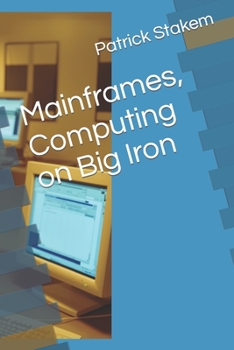Mainframes, Computing on Big Iron
This book covers the topic of mainframe computers, Big Iron, the room-sized units that dominated and defined computing in the 1950's and 1960's. The coverage is of efforts mainly in the United States, although significant efforts in the U.K., Germany, and others were also involved. Coverage is given for IBM and the 7 dwarfs, Burroughs, Control Data, General Electric, Hineywell, NCR, RCA, and Univac. There is also coverage of machines from Bendix, DEC, Philco, Sperry-Rand, and Sylvania. The predecessor architectures of Charles Babbage and his Differential Engine and Analytical Engine are discussed, as well as the mostly one-off predecessors Colossus, Eniac, Edvac, Whirlwind, ASCC, Sage, and Illiac-IV, How did we get where we are? Initially computers were big, unique, heavy mainframes with a dedicated priesthood of programmers and system engineers to keep them running. They were enshrined in specially air conditioned rooms with raised floor and access control. They ran one job at a time, taking punched cards as input, and producing reams of wide green-striped paper output. Data were collected on reels of magnetic tape, or large trays of punched cards. Access to these very expensive resources was necessarily limited. Computing was hard, but the advantages were obvious
Format:Paperback
Language:English
ISBN:1520216459
ISBN13:9781520216454
Release Date:December 2016
Publisher:Independently Published
Length:178 Pages
Weight:0.59 lbs.
Dimensions:0.4" x 6.0" x 9.0"
Customer Reviews
0 rating





